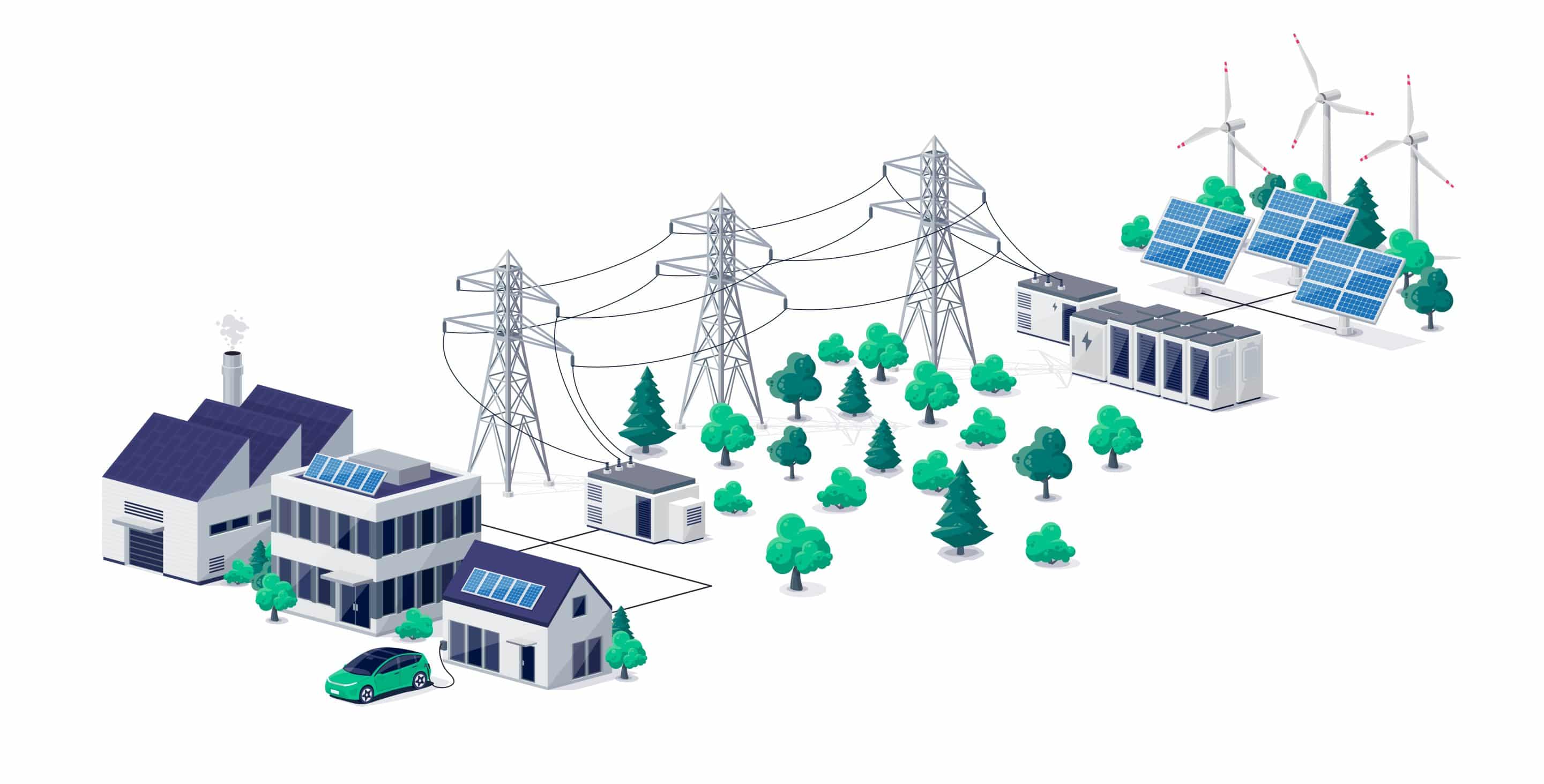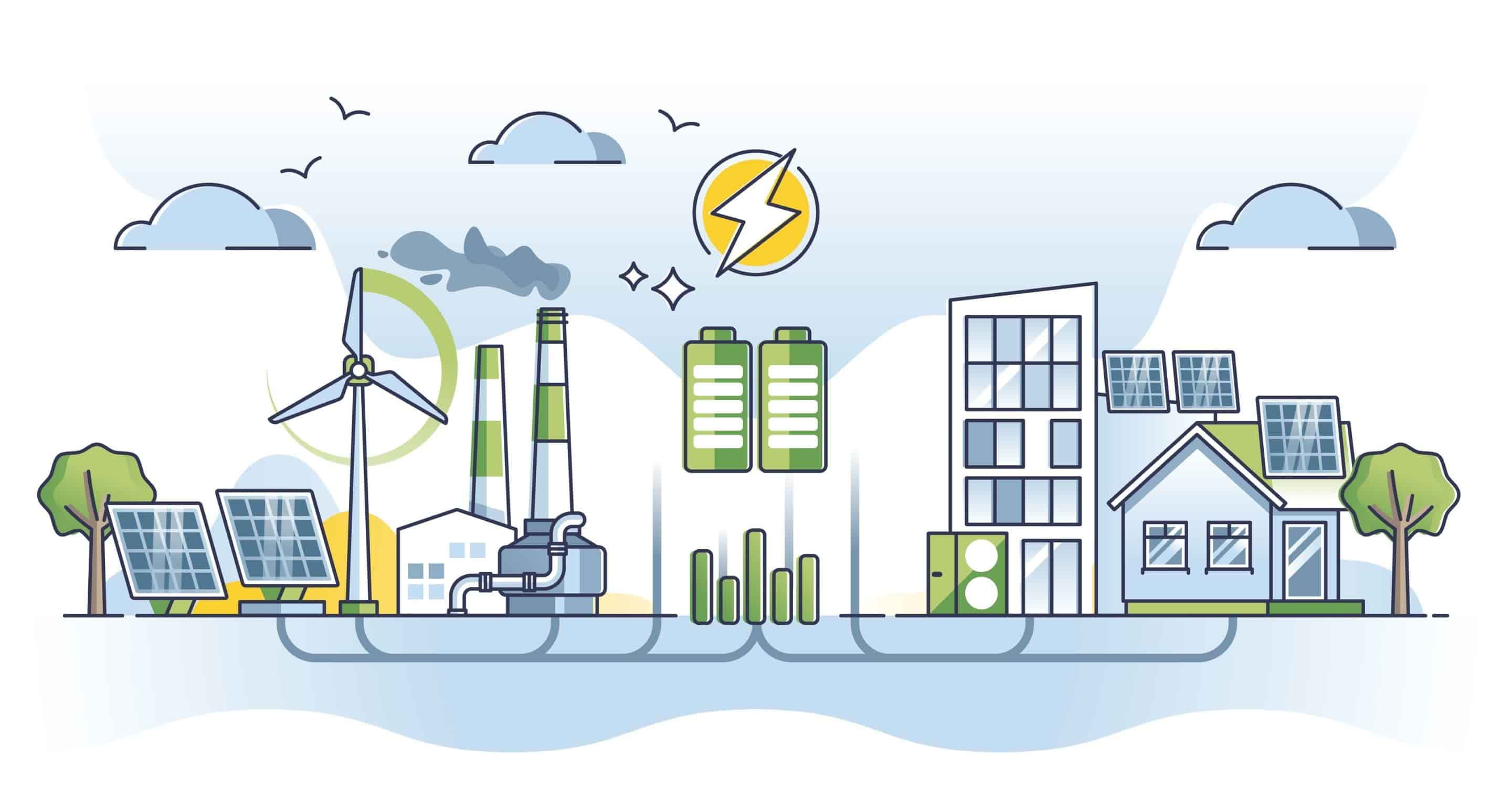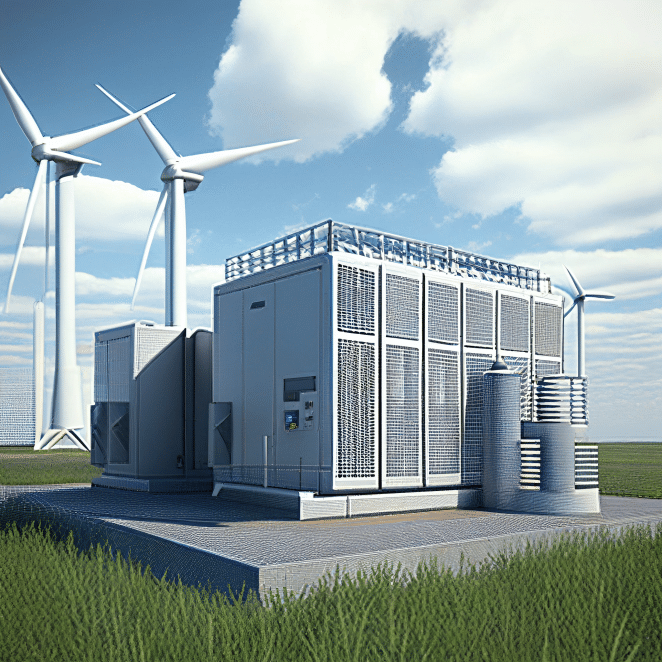In today’s rapidly changing world, the demand for clean and efficient energy sources has never been greater. Introducing Virtual Power Plant (VPP), an innovative solution that will revolutionize the way we generate, store, and utilize energy. VPPs are poised to transform the energy landscape and usher in a sustainable future.
What is a Virtual Power Plant?
A Virtual Power Plant is a network of decentralized energy generation, storage, and consumption units, all connected and managed through advanced software systems. VPPs optimize the energy production and consumption by distributing energy from various sources to where it’s needed most. This ultimately leads to a more efficient and sustainable energy system.
How does it work?
- Energy Generation: The VPP comprises various distributed energy resources (DERs) such as solar panels, wind turbines, and small-scale hydroelectric plants. These DERs generate clean, renewable energy that can be used directly or stored for later use.
- Energy Storage: VPPs employ advanced energy storage systems like cutting-edge battery technologies and green hydrogen systems to store excess energy generated by DERs. This stored energy can be utilized during peak demand or when renewable energy generation is low.
- Smart Management: Advanced software algorithms analyze real-time data on energy generation, storage, and demand. This data is used to optimize energy distribution, ensuring that energy is used efficiently and sustainably.
Benefits of Virtual Power Plants
- Increased grid stability: By balancing energy supply and demand, VPPs prevent power outages and reduce the strain on traditional power plants.
- Cost savings: By optimizing energy usage and reducing reliance on fossil fuels, VPPs can save consumers money on their energy bills.
- Emission reduction: VPPs primarily rely on renewable energy sources, thus significantly reducing greenhouse gas emissions.
- Scalability: VPPs can be easily expanded by adding more DERs and energy storage units, allowing them to grow with the increasing demand for clean energy.
- Resilience: The decentralized nature of VPPs makes them less vulnerable to disruptions in the energy supply, ensuring a more reliable energy system.
The Future of VPPs
VPPs are expected to play a significant role in achieving the global goals of carbon neutrality and energy efficiency. By integrating with electric vehicle charging infrastructure and smart grid technologies, VPPs will continue to evolve and adapt to our ever-changing energy landscape.
As the world moves towards a greener future, it’s crucial to invest in innovative energy solutions like Virtual Power Plants. By embracing VPPs, we can build a more sustainable and efficient energy system, empowering a brighter future for all.

Examples of Successful VPPs
VPPs are gaining momentum around the world, with numerous successful examples showcasing the benefits of this innovative approach. Let’s take a look at a few of these trailblazing projects:
1. Tesla’s VPP in South Australia
In 2018, Tesla partnered with the South Australian government to develop the world’s largest VPP. The project connected 50,000 residential homes with solar panels and Tesla Powerwall batteries, creating a decentralized energy network. This VPP has not only reduced energy costs for the participants but also increased grid stability in the region.
2. Next Kraftwerke’s VPP in Germany
Next Kraftwerke, a German energy company, operates one of Europe’s largest VPPs, connecting over 10,000 energy-producing and consuming units across eight countries. By leveraging advanced software algorithms, Next Kraftwerke’s VPP optimizes energy distribution and consumption, resulting in cost savings and reduced emissions.
3. Enel X’s VPP in the United States
Enel X, an Italian energy company, operates a VPP in the United States that comprises more than 6,000 commercial and industrial sites. This VPP enables businesses to reduce their energy costs and carbon footprint by optimizing energy usage and tapping into renewable energy sources. Enel X’s VPP also provides valuable grid services, such as demand response and frequency regulation, contributing to a more stable and resilient energy system.
Preparing for the VPP Revolution
As VPPs continue to prove their value, it’s essential for individuals and businesses alike to stay informed and be prepared to adopt these innovative energy solutions. Whether you’re a homeowner looking to size your solar energy storage and EV charging infrastructure or a business aiming to reduce your carbon footprint, understanding the benefits and potential of VPPs is crucial.
The world is on the cusp of an energy revolution, and Virtual Power Plants are leading the charge. By embracing VPPs and the sustainable solutions they offer, we can revolutionize the way we generate, store, and consume energy, paving the way for a greener, more prosperous future.

VPPs and the Integration of Emerging Technologies
As technology continues to advance, VPPs will have the potential to integrate with various emerging technologies to create even more efficient and sustainable energy solutions. Some of these promising technologies include:
1. Artificial Intelligence (AI) and Machine Learning
AI and machine learning algorithms can enhance the management of VPPs by providing accurate forecasts for energy generation, demand, and storage needs. These insights can help VPP operators optimize energy distribution and enhance grid stability, leading to further cost savings and reduced emissions.
2. Blockchain and Energy Trading
Blockchain technology has the potential to revolutionize energy trading by enabling secure, transparent, and efficient peer-to-peer transactions. VPPs can leverage blockchain platforms to facilitate the trading of energy among connected users, allowing them to buy and sell excess energy as needed.
3. Internet of Things (IoT) and Smart Home Technologies
As IoT and smart home technologies become more prevalent, VPPs can integrate with these devices to further optimize energy consumption. Smart thermostats, lighting systems, and appliances can be connected to the VPP, allowing for more precise control over energy usage and reducing overall energy demand.
Challenges and Opportunities Ahead
While VPPs have shown significant potential in revolutionizing the energy landscape, several challenges must be addressed to ensure their widespread adoption and success:
- Regulatory hurdles: The implementation of VPPs requires the development of new regulations and policies to accommodate the unique nature of decentralized energy systems. Governments must work to create a supportive regulatory environment that encourages VPP deployment and growth.
- Investment and financing: Developing and scaling VPPs requires substantial financial resources. Attracting investments and financing for VPP projects will be crucial for their widespread adoption and success.
- Cybersecurity: As VPPs become more interconnected and rely on advanced software systems, cybersecurity risks must be addressed to protect the integrity and reliability of the energy grid.
By addressing these challenges and capitalizing on the opportunities presented by emerging technologies, VPPs can continue to lead the way toward a sustainable and efficient energy future.
The Role of VPPs in Energy Market Transformation
Virtual Power Plants have the potential to transform the energy market by creating new opportunities and business models for energy consumers, producers, and utilities alike. Here are some ways VPPs can reshape the energy market:
1. Prosumers and Energy Empowerment
VPPs enable energy consumers to become “prosumers,” individuals who both produce and consume energy. By installing renewable energy systems and energy storage devices, prosumers can participate in VPPs, generating and storing clean energy. This not only reduces their energy costs but also allows them to sell excess energy back to the grid, creating new revenue streams.
2. Demand Response and Grid Flexibility
VPPs can help enhance grid flexibility by actively managing energy demand through demand response programs. By adjusting energy consumption patterns based on real-time grid conditions, VPPs can help maintain grid stability and reduce the need for costly grid upgrades.
3. Decentralization and Grid Resilience
As VPPs become more widespread, the energy grid will become more decentralized, reducing reliance on large, centralized power plants. This decentralization not only promotes the use of renewable energy but also increases the overall resilience of the grid, making it less vulnerable to disruptions and outages.
4. New Business Models and Opportunities
The growth of VPPs will create new business opportunities in the energy sector, such as energy trading platforms, demand response aggregators, and DER management services. These new business models will enable utilities and energy companies to adapt to the changing energy landscape and capitalize on the growing demand for clean and efficient energy solutions.

